#Productpackaging
Explore tagged Tumblr posts
Text
Design that Drives Sales!
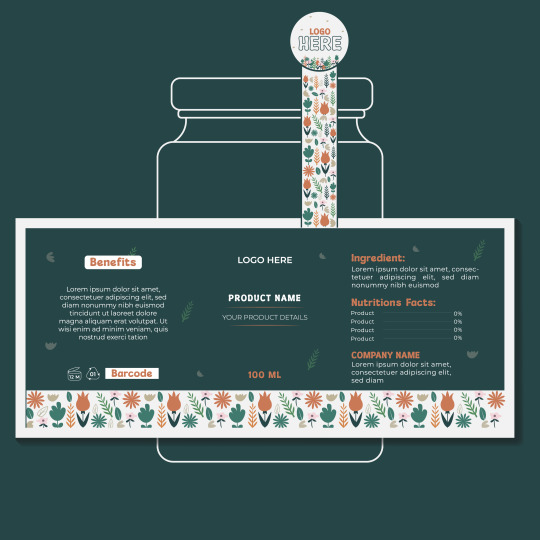
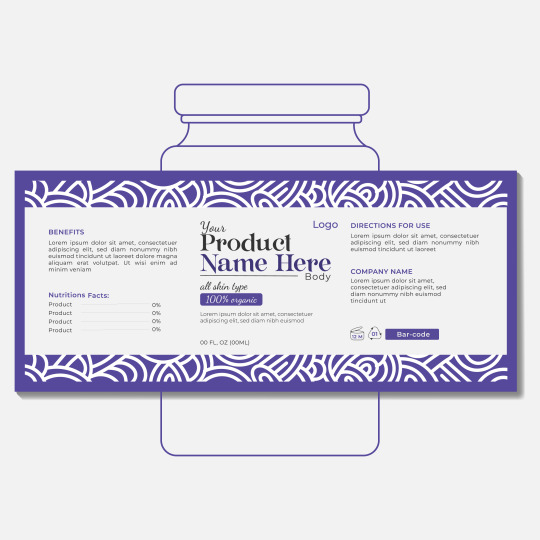

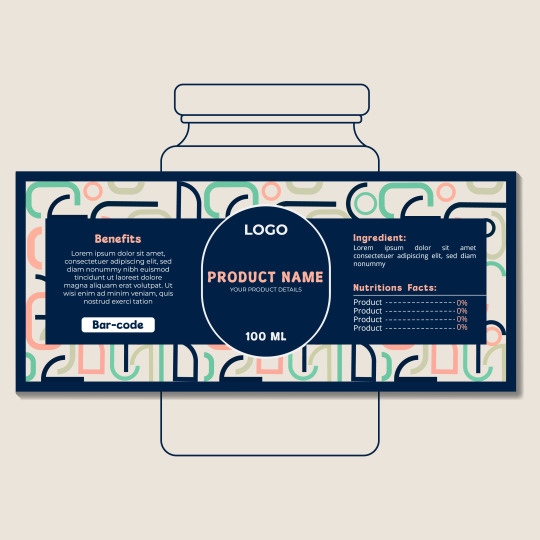

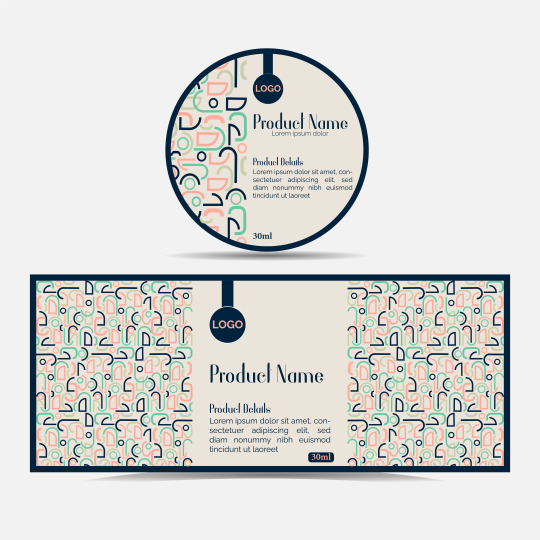
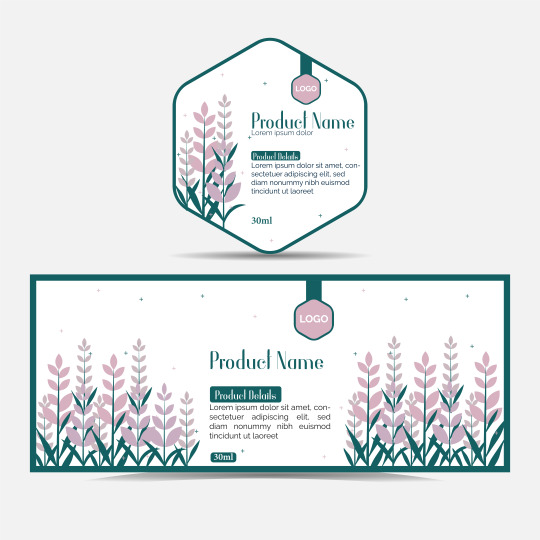
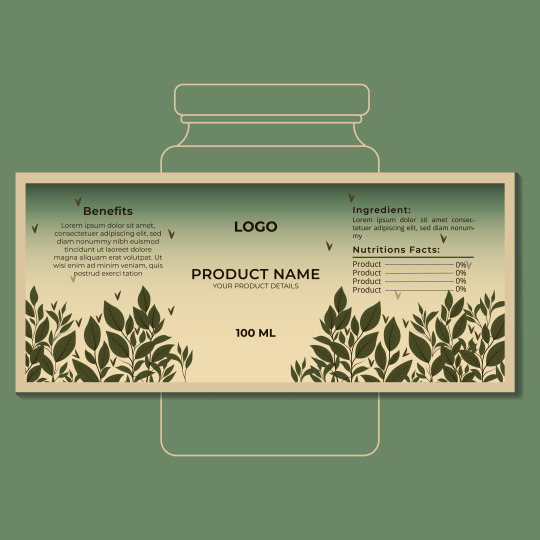
Your product label is a silent salesperson. A well-designed label not only grabs attention, but it also conveys important details and enhances the identity of your company. Make sure your product has a stunning label design that communicates your quality and values so it sticks out on the store.
#LabelDesign#ProductPackaging#GraphicDesign#CreativeLabels#PackagingDesign#digitalmarketing#marketing#VisualIdentity#Brand#MarketingStrategy#Product#Design#innovation#BrandStorStrategy#labeldesign#product#cosmatics#label
4 notes
·
View notes
Text

Another excellent project was done by #mahburahamn or Fiverr.
For getting a premium #logo and #packaging you can place an order for my gig on Fiverr; https://www.fiverr.com/share/jP4xVv
#packagingdesign#productpackaging#packaging#labeldesign#Branding#graphicindex#collectgraphics#logodesign#packagingideas#logo#logodesigns#logodesigner#branding#label#labeldesigner#therapycuppackaging#boxdesign#jardesign#box
10 notes
·
View notes
Text
#Packaging#SustainablePackaging#FlexiblePackaging#PackagingDesign#EcoFriendlyPackaging#RecyclablePackaging#ProductPackaging#FoodPackaging#BeautyPackaging#PharmaceuticalPackaging
2 notes
·
View notes
Text

Du willst ein Labeldesign für ein Honigprodukt? Ich hätte hier mal eben 15 verschiedene Styles für dich. Du willst dein eigenes Design? Melde dich einfach bei mir und dann machen wir was schönes! :)
#brandingdesign#packagingdesigner#brandingagency#graphicstudio#corporateidentity#boxpackaging#packagedesign#printdesign#packaginginspiration#productpackaging
1 note
·
View note
Text
🚀 Transform Your Product Packaging with the Stunning 3D Pouch Mockup! 🚀
Ready to elevate your brand and leave a lasting impression? Our brand-new 3D Pouch Packaging Mockup is your key to creating packaging that grabs attention and stands out from the competition.
youtube
Here’s why this mockup is a game-changer for your product:
✨ Realistic 3D Visuals Watch your pouch design come to life with lifelike, high-quality animations.
✨ Fully Customizable Tailor every detail from colors to logos, ensuring your product reflects your unique style and branding.
✨ Perfect for Marketing & Launches Whether you're unveiling a new product or promoting your latest line, this mockup is the ideal tool for captivating your audience and boosting sales.
🔥 Boost your brand’s visual appeal and make every product look as incredible as it truly is.
Ready to transform your packaging design?
🔗 Download Now: 3D Pouch Packaging Mockup It's time to elevate your product!
P.S. Don’t wait – your product deserves to be showcased in the best possible light. Let’s make it happen! ✨
#3DPouchMockup#NewRelease#ProductPackaging#3DVisualization#AfterEffectsTemplate#Branding#Marketing#ProductLaunch#PackagingDesign#CreativeDesign#MotionGraphics#ThunderMotion#Youtube
0 notes
Text

#foodpackaging#packaging#packagingdesign#kemasanmakanan#packagingideas#packagingsolutions#custompackaging#packagingbox#food#printing#box#productpackaging#paperbag#branding#packagingmurah#ecofriendly#foodpackagingdesign#design#foodgrade#lunchbox#foodpackagingsolution#graphicdesign#kemasan#jualkemasanmakanan#packagingmakanan#ecofriendlypackaging#foodpackagingspecialists#custombox#boxpackaging#foodpack
1 note
·
View note
Text

✨ Elevate your brand with Premium Rigid Boxes for Luxurious Packaging. Perfectly crafted to impress and protect your products. 🌟 #PackagingExcellence"
Visit Now: https://citipackaging.com/materials/custom-rigid-boxes/
#RigidBoxes#LuxuryPackaging#PackagingDesign#PremiumBoxes#CustomPackaging#BrandPackaging#PackagingSolutions#ElegantPackaging#BoxDesign#ProductPackaging#PackagingIdeas#LuxuryDesign#BrandingMatters#CreativePackaging
1 note
·
View note
Text
Calligraphy in Product Packaging: Branding with Beauty

Calligraphy in Product Packaging: Transform Your Brand with Stunning Designs
Chinese calligraphy is an independent art form that uses writing brushes to create Chinese characters. It has been developed continuously throughout history and has high aesthetic value. Calligraphy has the rhythm of music and the charm of dance, making it a unique art form. In modern design, Chinese calligraphy is being incorporated into visual communication and packaging design, merging traditional artistry with modern design concepts. The use of calligraphy in product packaging can elevate a brand's aesthetic and create a strong visual impact on consumers. Japanese designers have already embraced calligraphy in packaging design, creating a unique style that attracts consumers' attention and promotes sales. The use of calligraphy in packaging design can reflect the characteristics of the product and its cultural connotations, creating a sense of elegance and sophistication. The proper use of calligraphy in packaging design can enhance the overall branding and create a memorable impression on consumers. Calligraphy in product packaging presents endless opportunities for brands to enhance their aesthetic appeal and create a strong brand identity. By incorporating calligraphy into packaging design, brands can elevate their products and stand out in the competitive market. Key Takeaways: - Chinese calligraphy is an independent art form that merges traditional artistry with modern design concepts. - The use of calligraphy in product packaging elevates a brand's aesthetic and creates a strong visual impact on consumers. - Japanese designers have successfully incorporated calligraphy in packaging design to attract consumers' attention and promote sales. - Calligraphy in packaging design reflects the characteristics of the product and its cultural connotations, creating elegance and sophistication. - Incorporating calligraphy into packaging design enhances overall branding and creates a memorable impression on consumers.
The Role of Calligraphy in Packaging Design
Calligraphy plays a crucial role in packaging design, adding an artistic and aesthetic element to the overall presentation of a product. By incorporating calligraphy into packaging, brands can create unique and personalized designs that set their products apart from competitors. Handwritten calligraphy, with its authentic and organic feel, can add a touch of craftsmanship and individuality to packaging. Modern calligraphy styles offer versatility, allowing designers to adapt them to suit various product categories. From delicate and flowing scripts to bold and expressive lettering, calligraphy can convey different brand personalities and messages. Handcrafted calligraphy artwork on packaging acts as a visual storytelling tool, capturing consumers' attention and creating a memorable impression. One area where calligraphy excels in packaging design is logo creation. Incorporating calligraphy into the logo design can result in a distinctive and memorable brand identity. The unique letterforms and intricate strokes of calligraphy make for a visually striking logo that stands out in consumers' minds. Furthermore, calligraphy-inspired product packaging adds an element of elegance and sophistication. By integrating calligraphy into the overall design, brands can create a cohesive and visually appealing packaging experience. The attention to detail and artistic touch of calligraphy can elevate the perceived value of a product and enhance its appeal to consumers. Calligraphy in packaging design adds a sense of craftsmanship and attention to detail, contributing to a positive brand image. Whether used as an artwork on the packaging or incorporated into typography and graphics, calligraphy breathes life into product packaging. It reflects a brand's dedication to quality and aesthetics, fostering a deeper connection with consumers. The unique blend of tradition and modernity found in calligraphy enriches packaging design, creating a visual language that resonates with consumers on an emotional level.
The Impact of Calligraphy on Consumer Perception

Incorporating calligraphy into product packaging design can have a profound influence on consumer perception and brand recognition. By utilizing calligraphy, brands can convey a sense of tradition, elegance, and authenticity that resonates with consumers, leaving a lasting impression. Calligraphy packaging trends have been on the rise as companies look for innovative ways to differentiate their products and create a unique brand identity. By embracing calligraphy as a form of product branding, companies can tap into the power of this age-old art form and connect with consumers on a deeper level. Elevating Brand Image Calligraphy adds a touch of craftsmanship and attention to detail to product packaging, enhancing the perceived value of the brand. It conveys a sense of care and dedication, signaling to consumers that the brand takes pride in its products and delivers excellence. "The use of calligraphy in packaging design allows brands to create a memorable visual experience for consumers, evoking emotions and enhancing the overall brand perception." - John Chen, Branding Expert Creating a Sense of Authenticity By integrating calligraphy into packaging design, brands can evoke a sense of authenticity that captivates consumers. Calligraphy has a rich cultural heritage and carries the weight of tradition, adding depth and meaning to the brand's message. Aesthetic Appeal and Attention to Detail Calligraphy brings an unmatched aesthetic appeal to product packaging, capturing the attention of consumers. With its fluidity and elegance, calligraphy can transform ordinary packaging into a work of art, creating a strong visual impact. Benefits of Calligraphy in Packaging Design Consumer Impact Conveys tradition, elegance, and authenticity Influences brand perception and recognition Elevates the perceived value of the product Creates a sense of craftsmanship and attention to detail Evokes a sense of authenticity and cultural heritage Connects with consumers on a deeper level Enhances aesthetic appeal and visual impact Captivates consumer attention The impact of calligraphy on consumer perception is undeniable. As calligraphy packaging trends continue to evolve, brands have the opportunity to leverage this powerful art form to create a memorable brand experience and foster a strong connection with their target audience.
The Versatility of Calligraphy in Packaging Design
https://www.youtube.com/watch?v=2kDYzzBst3M Calligraphy offers a wide range of possibilities in packaging design. It can be used to convey brand messages, product information, or simply as a decorative element. Calligraphy on packaging creates a visual impact and attracts attention, making the product stand out on store shelves. With calligraphy, designers have the freedom to experiment with various font styles, sizes, and colors, allowing them to tailor the design to different product categories and brand aesthetics. Whether it's a bold and dramatic calligraphy font for a luxury perfume or a delicate and flowing script for a handcrafted soap, calligraphy adds a touch of elegance and sophistication to the packaging. Additionally, calligraphy can be seamlessly incorporated into packaging graphics, patterns, or illustrations, further enhancing the artistic appeal of the design. By integrating calligraphy elements, brands can infuse their packaging with a sense of craftsmanship and attention to detail, creating a unique and memorable visual experience for consumers. Examples of Calligraphy in Packaging Design Let's take a look at some examples of calligraphy in packaging design: "The Soap Co." uses elegant calligraphy for their product names, enhancing their luxurious and handmade branding. The intricate brush strokes communicate the brand's commitment to quality and craftsmanship. "GreenLeaf Tea" incorporates calligraphy-inspired patterns on their tea packaging, evoking a sense of tradition and tranquility. The intricately designed calligraphy motifs create a harmonious and visually appealing packaging. Product Brand Calligraphy Elements Perfume Aura Elegant calligraphy font for the brand name and product description Handmade Soap Artisan Goods Delicate calligraphy script for the product name and ingredients Tea Harmony Brew Calligraphy-inspired patterns and motifs on the packaging These examples illustrate the versatility of calligraphy in packaging design, showcasing how it can be used to create unique and customized packaging that aligns with the brand's identity and captures the essence of the product. In the next section, we will explore the impact of calligraphy on consumer perception and delve deeper into the growing calligraphy packaging trends.
Conclusion
Calligraphy in product packaging provides a unique opportunity for brands to enhance their aesthetic appeal and establish a strong brand identity. By incorporating calligraphy into packaging design, brands can elevate their products and differentiate themselves in the competitive market. Calligraphy offers versatility, allowing designers to create personalized and captivating packaging that resonates with consumers. From logo designs to artwork and typography, calligraphy adds a touch of elegance and authenticity to packaging, creating a lasting impression on customers. As calligraphy packaging trends continue to evolve, brands can explore innovative ways to incorporate calligraphy into their packaging strategies. This timeless art form not only reflects the cultural richness and heritage but also offers a modern marketing potential that captivates consumers. With calligraphy in product packaging, brands can create a memorable brand experience that reflects their values and captivates consumers' attention. Embracing calligraphy in packaging design allows brands to stand out, project elegance, and elevate their products, a valuable tool for branding with beauty.
FAQ
What is calligraphy and how is it used in product packaging? Calligraphy is an independent art form that uses writing brushes to create Chinese characters. It is being incorporated into modern design, including product packaging, to merge traditional artistry with modern concepts. How can calligraphy enhance the overall branding of a product? Calligraphy adds an artistic and aesthetic element to the packaging design, creating a strong visual impact on consumers and reflecting the characteristics and cultural connotations of the product. What role does calligraphy play in logo design for packaging? Calligraphy can be used to create a distinctive and memorable brand identity, adding a touch of elegance and sophistication to the overall packaging design. How does calligraphy in packaging design impact consumer perception? Calligraphy conveys a sense of tradition, elegance, and authenticity, resonating with consumers and creating a positive brand image. It also enhances the perceived value of a product through its craftsmanship and attention to detail. How versatile is calligraphy in packaging design? Calligraphy can be used to convey brand messages, product information, or simply as a decorative element. It can be customized to suit different product categories and brand aesthetics, creating unique and personalized packaging.
Source Links
- https://www.designcuts.com/product/broadloom-beauty-calligraphy-font/ - https://www.1001fonts.com/beauty product-packaging calligraphy-fonts.html - https://www.packmage.com/about/article/358-B_Do_you_know_the_calligraphy_art_used_in_the_packaging_design? Read the full article
0 notes
Photo

Northwell is a rustic handwritten font with personal charm, perfect for branding projects, homeware designs, and product packaging. It features quick dry strokes and a signature style, available in two styles: textured and clean.
Link: https://l.dailyfont.com/enHkJ
#aff#HomeDecor#DesignInspiration#Typography#Handmade#RusticCharm#Branding#ProductPackaging#Homeware#FontLove#CreativeCommunity#DesignLovers#StationeryGoals#BrandIdentity#MarketingTips#SocialMedia#DesignTrends
0 notes
Text
From Concept to Shelf: The Step-by-Step Process of Creating Great Product Packaging
Creating great product packaging is much more than just making something look good. Packaging plays a critical role in protecting the product, conveying the brand’s message, and influencing consumer decisions. In a crowded marketplace, the right packaging can be the deciding factor between a product sitting on a shelf or flying off it.
But how exactly do you go from a simple idea to a product sitting on retail shelves? The journey from concept to shelf is intricate, requiring careful planning, design, testing, and production. In this article, we’ll walk you through the step-by-step process of creating product packaging that stands out, works efficiently, and resonates with consumers.
Step 1: Define Your Brand and Understand Your Audience
Before you even think about design, materials, or costs, the first step is to define your brand and understand your audience. Packaging is a direct reflection of your brand, and it must speak to your target market in a way that aligns with your core values.
Key Questions to Consider:
Who is your target customer? Is your product aimed at young adults, parents, or seniors? Different demographics respond to different visual cues.
What is your brand’s personality? Is it fun and playful, or sleek and sophisticated? Your packaging should align with the tone and values of your brand.
What’s your competitive edge? What makes your product unique in the market, and how can your packaging reflect that?
Pro Tip: Use customer personas—detailed profiles that represent your ideal buyers—to guide your packaging design. Understanding their preferences will help you create packaging that speaks directly to them.
Step 2: Set Functional Requirements for Your Packaging
Great packaging is not just about aesthetics. It’s about functionality too. Your packaging must protect your product, be easy to handle, and ensure it can reach your customer in perfect condition. At this stage, you’ll need to make important decisions regarding the material, size, and structure.
Functional Considerations:
Protection: Does your product need extra padding, moisture protection, or temperature control? Fragile items, like glass or electronics, need packaging that safeguards them from impact.
Ease of Use: Consider how consumers will interact with your product. Is it easy to open, reseal, or dispose of? Convenience can make a significant difference in user experience.
Storage & Shipping: Your packaging should optimize storage and transportation, minimizing space and reducing the risk of damage during shipping.
Sustainability: As environmental concerns continue to rise, many consumers prioritize eco-friendly packaging. Consider using recyclable, biodegradable, or reusable materials to meet sustainability goals.
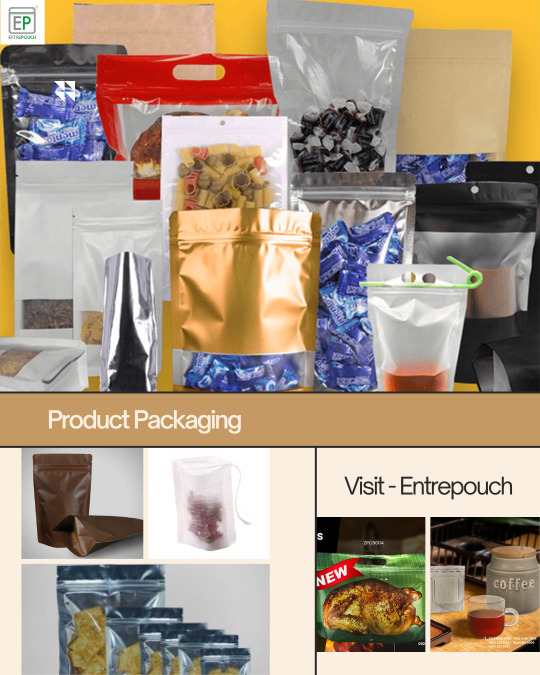
Step 3: Create the Design Concept
Once the functional aspects are set, it’s time to get creative. The design of your packaging is what grabs attention and sets you apart from competitors. Whether it’s eye-catching graphics or a minimalist approach, your design should be carefully crafted to communicate your brand’s story and attract consumers.
Design Elements to Focus On:
Color Palette: Colors are powerful and can evoke emotions. Bold, bright colors often work for energetic or youthful products, while muted tones may be used for luxury or wellness items.
Typography: Your choice of font can greatly impact how your brand is perceived. Playful fonts might work for a toy or kids’ product, while sleek, modern fonts may be better suited for high-end cosmetics.
Logo and Branding: Your logo is the most crucial part of your design. It should be visible and recognizable. Ensure that your packaging aligns with the broader branding of your company, from your website to social media.
Graphics & Imagery: Use high-quality images, illustrations, or patterns that support the product’s appeal. For example, packaging for a food product can show vibrant, appetizing photos, while a beauty product might feature calming or elegant designs.
Pro Tip: Test your packaging design with your target market before finalizing it. Collect feedback through focus groups or surveys to ensure it resonates with your intended audience.
Step 4: Choose the Right Materials
The materials you choose for your packaging are essential. Not only do they need to protect the product, but they should also convey your brand’s identity and ensure that the product is transported and stored safely.
Popular Packaging Materials:
Cardboard: Ideal for boxes and outer packaging, it’s versatile, lightweight, and easily recyclable.
Plastic: Commonly used for containers and bottles, it’s durable and cost-effective, but it’s increasingly being replaced with more eco-friendly alternatives.
Glass: Preferred for luxury items like perfumes, beverages, and cosmetics, glass has a premium feel but can be fragile.
Aluminum: Often used for cans or high-end products, aluminum is lightweight and recyclable, making it both functional and sustainable.
Paper & Kraft Materials: These are biodegradable options that align with a sustainable and eco-conscious approach to packaging.
Pro Tip: Always consider the entire lifecycle of your packaging material—from production to disposal. If sustainability is important to your brand, look for certified sustainable materials like FSC-certified cardboard or biodegradable plastics.
Step 5: Prototype and Test Your Packaging
Once you’ve got the design and material sorted, it’s time to create a prototype. Prototyping allows you to evaluate the functionality and look of your packaging before committing to mass production. It’s also an opportunity to catch any potential issues early in the process.
Key Testing Areas:
Durability Testing: Will the packaging protect the product during transportation and display? Perform drop tests, crush tests, and vibration tests to simulate real-world handling.
Usability Testing: Is the packaging easy to open, close, or store? Get feedback on how functional the packaging is from your test audience.
Market Feedback: Conduct surveys or focus groups to gauge customer reaction. Are they likely to buy based on the packaging alone? Does it grab their attention on the shelf?
Regulatory Compliance: Depending on your product, your packaging may need to comply with specific industry regulations, such as food labeling laws or safety standards.
Pro Tip: Don’t skip testing, especially for fragile or high-end products. It’s better to make adjustments at this stage than to face costly production issues later.
Step 6: Mass Production and Quality Control
Once your prototype passes all the tests and feedback is positive, it’s time to move forward with mass production. This phase involves scaling up the production of your packaging materials, printing designs, and assembling the final product.
Mass Production Tips:
Manufacturing Partners: Work closely with your suppliers and manufacturers to ensure quality and consistency. A strong relationship with your packaging supplier can make a big difference in terms of cost efficiency and production speed.
Quality Control: Regular quality checks during production are essential. Ensure that every batch of packaging meets your design and functional standards, and monitor for any defects or inconsistencies.
Packaging for Distribution: Consider how your packaging will be stacked, stored, and shipped. Optimizing for transportation and minimizing damage during the supply chain process will ensure your product arrives in perfect condition.
Pro Tip: When working with manufacturers, be clear about timelines, costs, and any potential delays. Keep communication open throughout the entire process to avoid last-minute surprises.
Step 7: Marketing and Shelf Placement
Once your product and packaging are ready, it’s time to put it out there. The final step in the process involves ensuring your packaging is visible, attractive, and ready for sale.
Marketing Strategies:
Point of Sale: Packaging is the first thing customers see, so it needs to stand out on the shelf. Make sure your design is eye-catching and communicates your product’s value immediately.
Online Store: If you’re selling online, high-quality images and clear descriptions of the product and packaging are crucial. Ensure that the packaging looks just as appealing in photos as it does in person.
Social Media & Influencer Marketing: Use Instagram, TikTok, and other platforms to show off your product’s beautiful packaging. Social media can be a great way to engage with customers and generate buzz around your launch.
Pro Tip: Make your product “Instagrammable.” Beautifully designed packaging encourages consumers to share photos online, which can give your brand valuable exposure.
Conclusion: The Art and Science of Product Packaging
Creating great product packaging is an intricate process that requires balancing creativity, functionality, and sustainability. From defining your brand and target audience to choosing the right materials, designing the package, testing it, and finally getting it on the shelf, each step plays a crucial role in the success of your product.
By following this step-by-step process, you’ll be able to create packaging that not only protects your product but also communicates your brand’s story, catches the eye of your target audience, and increases the likelihood of a successful product launch. Whether you’re a startup or an established brand, investing in great product packaging is an investment in your product’s future.
#ProductPackaging#PackagingDesign#PackagingProcess#DesignToShelf#PackagingInnovation#BrandPackaging#PackagingDevelopment
0 notes
Text
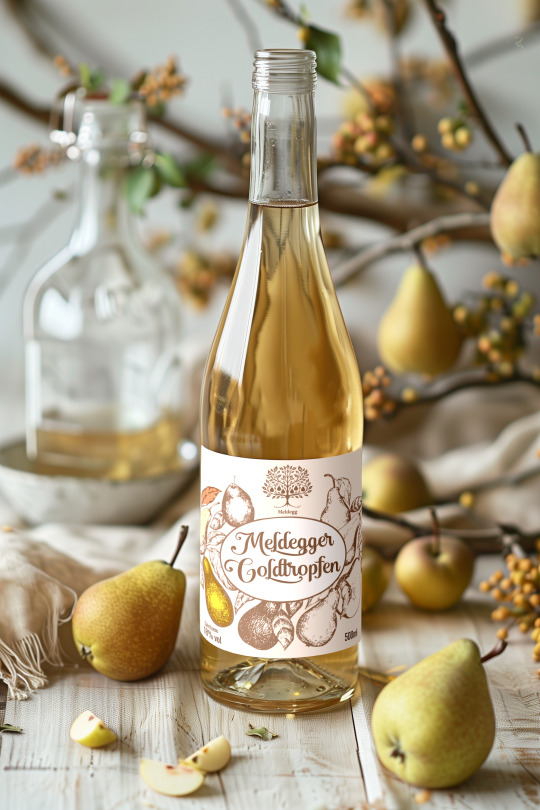

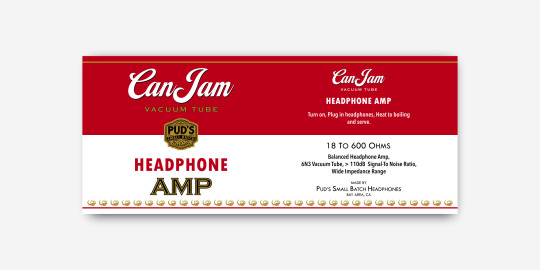
Create a product label or packaging for your food brand or any banding product
I am Creative designer and Branding expert who can help your product to make Effective presence through Branding, Design and packaging.
In this particular Gig you can get an original design of a label for drinks such as tea, coffee, beer, sparkling water, energy drinks you name it.
packaging design, product packaging design, your food product packaging, food packaging, customized food product labels, packaging, package your food product tutorial, food packaging label design, custom food product labels, packaging ideas, label design for food packaging, customized labels for food, how to get custom product packaging for foods, label design for food products, how to design product packaging, product packaging design tutorial, food product packaging
#HappyThanksgiving#MigglesArmy#Custom#Dodgers#WednesdayMotivation#packagingdesign#packaging#graphicdesign#branding#design#packagingideas#brandidentity#packagingsolutions#custompackaging#logo#packagingbox#graphicdesigner#box#packagingmurah#brandingdesign#foodpackaging#illustration#custombox#logodesigner#printing#logodesign#packagingdesigner#productpackaging#boxpackaging#designer
1 note
·
View note
Text
The Art and Science of Package Design: Merging Creativity with Technical Expertise
1.How to get into package design?
Entering the dynamic field of package design requires a harmonious blend of creativity, technical skill, and a comprehensive understanding of industry standards and consumer behaviour. To embark on this career path, it is advisable to pursue a relevant degree in graphic design, industrial design, or a related discipline. This educational foundation will not only equip you with essential design principles but also enhance your ability to think critically and solve complex problems. As you progress through your studies, it is vital to develop a robust portfolio that showcases a diverse range of design projects. This portfolio should highlight your unique ability to harmonize aesthetics with functionality, demonstrating how your designs not only attract consumers but also serve practical purposes in packaging. In addition to formal education, gaining practical experience is paramount in establishing a successful career in package design. Seek out internships or entry-level positions at design firms, marketing agencies, or companies specializing in packaging. These opportunities will allow you to familiarize yourself with industry standards, software tools, and the production processes involved in packaging design. Furthermore, networking with professionals in the field can significantly enhance your career prospects. Attend design conferences, workshops, and seminars, and actively engage in relevant online communities to stay informed about current trends and emerging opportunities. Given the ever-evolving nature of design, embracing continuous learning and adaptability will be crucial for your long-term success in the competitive landscape of package design.
2. Who designs packaging for products?
Packaging design is an intricate and dynamic discipline that requires the collaboration of a diverse team of professionals, each bringing their unique expertise to the table. At the forefront are graphic designers, who are tasked with developing visually captivating artwork and typography. Their role extends beyond mere aesthetics; they must effectively communicate the brand's identity and product information to consumers at a glance. This visual language plays a critical role in attracting potential buyers and differentiating the product in a crowded marketplace. In tandem with graphic designers, industrial designers focus on the structural aspects of packaging, ensuring it is not only visually appealing but also functional and sustainable. They consider factors such as materials, production processes, and the physical protection of the product during transit and display on store shelves. Their insights are essential in creating packaging that safeguards the product while also being environmentally responsible, an increasingly vital consideration in today's eco-conscious consumer landscape. Furthermore, marketing specialists play a pivotal role in the packaging design process by analysing consumer behaviours, market trends, and competitive landscapes. Their research informs design decisions, ensuring that packaging not only captures attention but also resonates with target audiences. By understanding what drives consumer choices, marketing professionals can guide the design team in creating packaging that enhances product visibility and appeal. This collaborative effort culminates in packaging that strikes a perfect balance between creativity and functionality, embodying the brand's essence while effectively meeting consumer needs. Ultimately, successful packaging design is a result of this harmonious blend of artistic vision, practical application, and strategic branding, aimed at captivating consumers and fostering brand loyalty in an increasingly competitive market.
3. How to construct a package design?
Constructing an effective package design is a multifaceted process that requires careful consideration of both functional and aesthetic elements. The first step in this journey is to define the target audience and conduct thorough research on market trends. Understanding the preferences, behaviours, and demographics of potential consumers will guide your design choices and ensure relevance in a competitive marketplace. Additionally, selecting the right materials is crucial they should not only provide adequate protection for the product but also align with the brand's values, particularly in terms of sustainability. As consumers increasingly prioritize environmentally friendly options, utilizing recyclable or biodegradable materials can enhance brand perception and appeal. Once the foundational elements are established, the next phase involves developing a cohesive visual identity that embodies the brand's essence. This includes careful selection of colour schemes, typography, and imagery that resonate with the intended audience and create an emotional connection. It is also essential to ensure compliance with regulatory guidelines, incorporating necessary information such as ingredient lists, nutritional facts, and safety warnings. The packaging should be intuitive and user-friendly, enhancing the consumer experience. Following the design phase, prototyping and testing are imperative. This iterative process allows for the evaluation of usability and visual appeal, enabling designers to gather feedback and make necessary adjustments. Ultimately, a well-executed packaging design not only enhances product visibility but also significantly contributes to brand recognition and loyalty in the long run.
4. What is a good package design?
A well-crafted package design serves as a crucial intersection of aesthetics, functionality, and sustainability, creating a compelling consumer experience that is both memorable and impactful. At its core, effective packaging must visually articulate the brand identity, serving as a silent yet powerful ambassador in a crowded marketplace. Through the thoughtful selection of colours, typography, and imagery, the packaging should resonate deeply with the target audience, inviting them to engage with the product on a personal level. This visual language not only captures attention but also communicates essential product information clearly and concisely, allowing consumers to make informed decisions. The integration of design elements that reflect the brand’s values and mission can further enhance the emotional connection with consumers, fostering a sense of trust and loyalty. In addition to aesthetic appeal, functionality is a vital component of successful package design. Packaging must protect the product from damage, preserve its quality, and facilitate ease of use for the consumer. Features such as easy-open mechanisms, resealable options, and ergonomic designs can significantly enhance the user experience, making the product more accessible and enjoyable. Furthermore, as consumers become increasingly aware of environmental issues, incorporating sustainable materials into packaging design is no longer optional but essential. Utilizing eco-friendly materials not only minimizes environmental impact but also aligns the brand with the values of environmentally conscious consumers, reinforcing a commitment to sustainability. Ultimately, a well-executed package design not only enhances the product’s appeal on shelves but also strengthens brand loyalty, encouraging repeat purchases and fostering long-term customer relationships.
5. What is eco packaging design?
Eco packaging design encompasses a comprehensive approach to developing packaging solutions that prioritize sustainability and environmental responsibility. This innovative design philosophy involves the careful selection and use of materials that are not only recyclable but also biodegradable or derived from renewable resources. By emphasizing these criteria, eco packaging effectively minimizes waste generation and significantly reduces the carbon footprint typically associated with conventional packaging methods. Additionally, this forward-thinking approach addresses the pressing concerns of resource depletion and environmental degradation, which are critical issues facing our planet today. As businesses and consumers increasingly recognize the importance of sustainability, eco packaging design emerges as a vital component in the effort to mitigate environmental impact while ensuring compliance with evolving regulatory standards. Moreover, eco packaging design goes beyond merely selecting sustainable materials; it also entails optimizing the use of these resources to enhance efficiency throughout the entire production and distribution process. This involves innovative design techniques that not only ensure the protection of the product but also maintain its visual appeal and functionality to the consumer. By embracing a holistic approach that balances aesthetics with practicality, brands can foster a positive consumer experience while reinforcing their commitment to environmental stewardship. The integration of sustainable practices into packaging design not only elevates brand image but also empowers consumers to make informed, environmentally conscious choices. Ultimately, this shift towards eco-friendly packaging supports the development of a circular economy, wherein materials are reused and recycled, thus promoting a healthier planet for future generations.
0 notes
Text

Comparing Blister Pack Suppliers: What to Look For
When comparing blister pack suppliers, it’s essential to consider key factors like material quality, production capabilities, and pricing. A reliable blister pack supplier should offer durable materials that protect products from damage while maintaining visual appeal. Additionally, check their production capacity to ensure they can meet your volume needs. Pricing is another critical element, but don’t sacrifice quality for cost savings.
0 notes
Text
A thrilling race of speed and passion unfolded in the packaging workshop.
The host was full of energy during the recording,
while our team worked at lightning speed.
#behindthescenes#records#recording#packing#productpackaging#packingbox#packingworkshop#packingwithcare#packingwithlove#cnctattoomachine#factory#cnctattoo#cnctattoosupply#cnctattoocartridges#cnctattoomanufacture#cnctattoofactory#cnctattooneedle#cnctattoobusiness
0 notes
Text
sustainable plastic packaging
Circular Economy in Packaging
The circular economy is revolutionizing sustainable packaging. This model emphasizes the reuse, recycling, and regeneration of materials, aiming to create a closed-loop system where waste is minimized. In 2024, expect to see more brands adopting circular packaging solutions that enhance recyclability and promote the reuse of materials. Innovations like take-back programs and packaging designed for easy recycling will become more prevalent.
#ecofriendlypackaging#brandedpackaging#productpackaging#uniquepackaging#packagingdesign#sustainabledesign#customboxes#customepackagingboxes#custommade#customdesign#custompackagingdesign
0 notes
Text
How to make all types of product packaging and label design
How to make all types of product packaging and label design
#LabelDesign #BoxDesign #Packaging #ProductPackaging #PackagingDesign
#AEWAllInLondon #RahulGandhi
0 notes